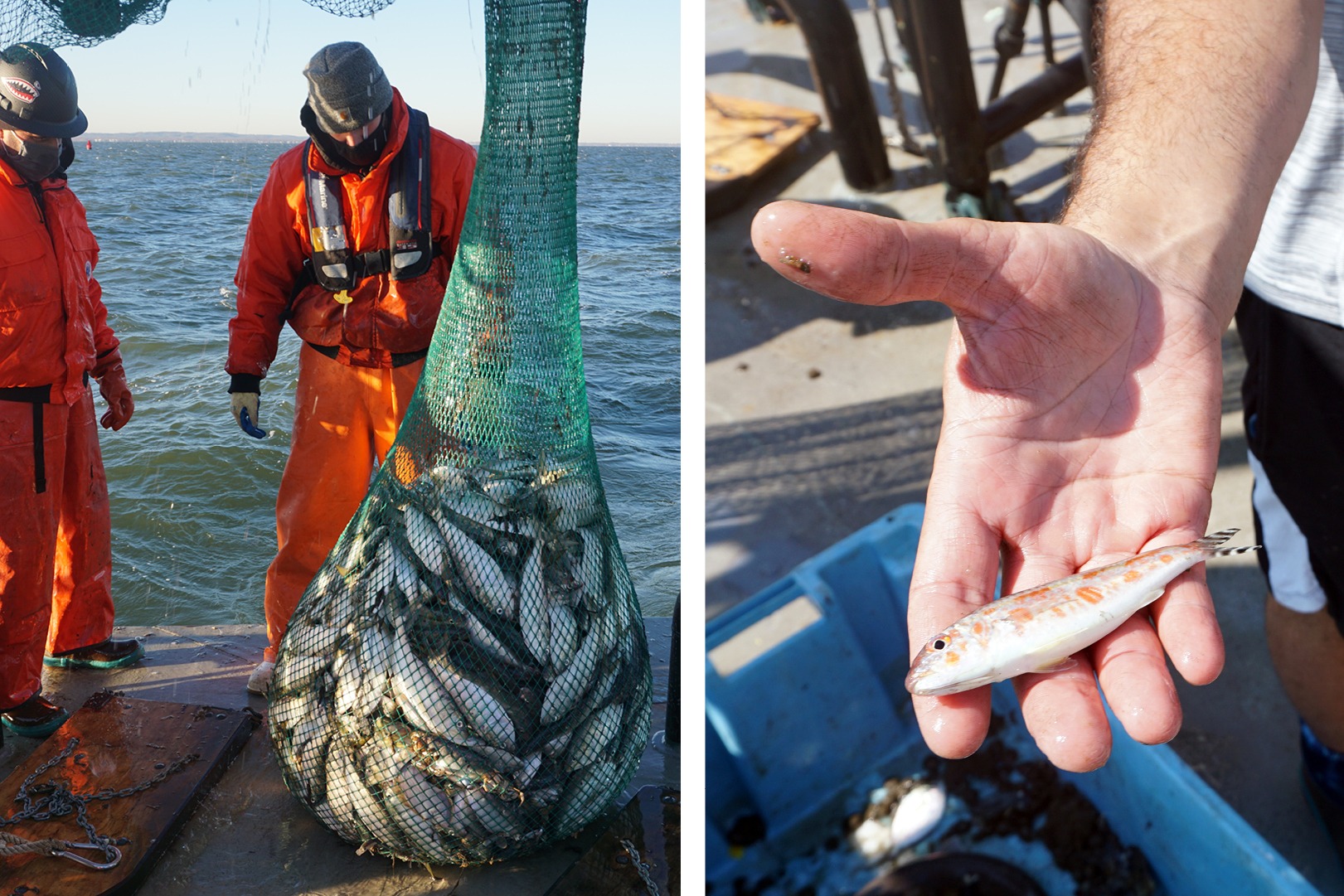
Searchers haul in fish for counting. The fish are tossed back after each is weighed and measured. Courtesy of the Urban Coast Institute
Should you spot a boat this spring with the name R/V Heidi Lynn Sculthorpe in either the Sandy Hook or Raritan Bay, that would be the 49-foot research vessel operated by the Urban Coast Institute, a Center of Distinction at Monmouth University. For the past 14 months, Monmouth associate professor Jason Adolf has been conducting a fish census aboard the boat with the help of students, faculty and UCI staff.
On one recent winter day, two members of the team lifted a net full of fish—hake, flounder and three striped bass—out of the water and tossed them into 5-gallon buckets. (A summer catch might include squid, spider crabs and butterfish.) Each fish was weighed and measured on a worktable at the center of the boat. A student noted the findings on a chart, along with each specimen’s sex and species. When all the fish were accounted for, they were tossed back into the water. The researchers repeated the procedure at five different spots along the bay.
The information learned about these fish, which inhabit what’s known as the Lower Hudson-Raritan Estuary, is important to marine scientists, commercial fishermen and anyone else concerned with the health of the fish and the marine ecosystem.
[RELATED: Meet the Rowan Professor Mapping Jersey’s Future]
That also goes for the environmental DNA (eDNA) work the teams do on these trips. Fish leave genetic material behind as they swim, so the groups collect water and sediment samples for lab study. This will help determine whether eDNA is a potential supplemental source of significant data.
Covid-19 restrictions have slowed the project, but Adolf hopes to continue the trips past the planned December 31 completion date and collect data over an even greater period. “There are so many stressors that come out of that waterway, including the impact of climate change,” says Adolf. “The only way to get a true sample of what’s going on there is to test it over time.”
